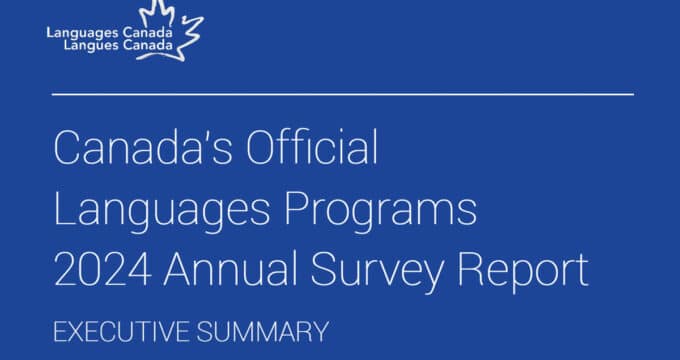Canada moves to speed student visa processing for selected Asian markets
Students from China, India, Vietnam, and the Philippines applying for full-time study at Canadian institutions or schools can now access a new, expedited student visa processing stream just announced by Immigration, Refugees and Citizenship Canada (IRCC). The new system is called the Student Direct Stream (SDS), and it is open to students from the four countries who meet certain language and financial criteria. The SDS was launched following similar visa expediting pilot programmes in the four countries and it replaces and consolidates those programmes. Under Canada’s regular visa processing stream, Chinese students wait on average four weeks for their visas to be processed, Filipino students six weeks, Indian students seven weeks, and Vietnamese students 17 weeks. These processing times will be reduced for students who qualify for the SDS.
Language ability and financial resources required
Not all Chinese, Indian, Vietnamese, and Filipino students will be able to apply through SDS. Those who are eligible will have:
- Higher-than-average language skills (an IELTS score of at least 6 for English-language studies or a Niveaux de compétence linguistique canadiens score of at least 7);
- A certain level of financial security, to be shown through a Guaranteed Investment Certificate (GIC) of CAN$10,000 from Scotiabank of Canada and proof of tuition payment for the first year of studies.
In addition, students applying under SDS will need to show proof of having been accepted into a full-time programme at a Canadian learning institution that is designated to host international students and undergo a medical examination before applying.
New system complements Canada’s Express Entry Immigration System
The Canadian government prioritises immigration seekers who stand the best chance of achieving success in Canada and contributing to the economy, a goal that it supports through its Express Entry system. This system is effectively a selection mechanism for prospective immigrants to Canada, and that mechanism places international students on a stronger footing to be considered for immigration. IRCC explicitly links the new SDS programme with immigration strategies, noting in an official statement that,
“The SDS complements the Express Entry system as these students [from China, India, the Philippines, and Vietnam] will be well placed to continue on the path to permanent residence and Canadian citizenship after completing their studies in Canada, if they wish to.”
Regular processing stream still open
Chinese, Filipino, Indian, and Vietnamese students applying to study in Canada who can accommodate a longer processing time or who do not meet SDS criteria can still apply through the regular student processing stream. In addition, students from the four markets who are not living in their home country when applying to Canadian institutions are not eligible for the Student Direct Stream, and must apply through the regular visa processing stream.
Plan to extend to Africa
The Student Direct Stream is tailor-made for high-priority sending markets for Canada, and the plan is to extend the countries in which it is available. IRCC says, “We are also working on expanding SDS to Africa and are looking at options in Kenya and Senegal. Expansion to Senegal would be in line with the department's focus to attract more French-speaking students to Canada.”
More evidence of Canada’s ambition to court the world’s top students
The Honourable Ahmed Hussen, Canada’s Minister of Immigration, Refugees and Citizenship, offered the following statement on the launch of the Student Direct Stream: "IRCC recognises the tremendous economic, cultural and social benefits that international students bring to Canada. We are committed to improving client service for all applicants, including students, as we continue to find new and efficient ways to reduce processing times." That the government chose to open the new programme initially to students from China, India, Vietnam and the Philippines (and soon to those from Kenya and Senegal) can be seen as a reflection of Canada’s priority student markets. That the SDS includes more stringent application criteria than the regular processing stream can be viewed as a signal regarding the type of student Canada most wants to attract: those with a great chance of success in their studies, and those who would be excellent candidates for immigration once they graduate. After several years of greatly expanded recruiting by many Canadian colleges and universities – and national-level support for increasing international student numbers – half a million international students now study in Canada. As we reported recently, managed growth is one of the emerging themes in Canadian admissions.
Welcome news in India
Responding to the news of the SDS programme, High Commissioner for Canada to India Nadir Patel said:
"Canada has quickly become the preferred destination for Indian students looking for a high quality international education. Canada provides a world-class education in a safe and welcoming environment at a competitive and affordable cost. The new SDS will provide for students aspiring to go to Canada with an even faster and more streamlined visa application process."
Additional incentive for Filipino students to study in Canada
In announcing the news of the SDS programme in the Philippines, Canadian Ambassador John Holmes added, “There are many advantages to studying in Canada, including world class institutions, lower costs, and a safe and healthy environment for students. The improvements to the Embassy’s visa processing system, including those offered by the SDS Program, is just one more reason why Filipino students should make Canada their destination of choice.” For additional background, please see:


















